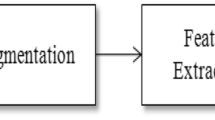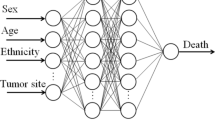Abstract
Leukemia is usually characterized as a potentially fatal disease with different types and subtypes. It pretends as one of the major reason for death in developed and developing nations like Bangladesh, almost a hundred thousand people around the world are losing the fight against leukemia in every decade. An early prediction and diagnosis of a leukemia type have become inexorable in treatment, as it can reduce deadly risk to the valuable life of affected patients. This paper's objective is to design and development a smart decision support prediction system of Acute Lymphoblastic Leukemia Subtypes using Artificial Neural Network (i.e. ANN) and Adaptive Neuro-Fuzzy Inference System (i.e. ANFIS). For this prediction system, 500 datasets (main database) of different subtypes of Acute Lymphoblastic Leukemia patients are used. Training and testing are the two main steps of ANN and ANFIS, where 445 and 55 datasets are elected for training and testing respectively. According to the experimental result, it is apparent that the Adaptive Neuro-Fuzzy Inference System (i.e. ANFIS) approach performs better than the Artificial Neural Network (i.e. ANN) in both training and testing. Analysis reveals that a simple and well ergonomic back-propagation learning technique of Artificial Neural Network (i.e. ANN) and a hybrid optimization learning technique of the Adaptive Neuro-Fuzzy Inference System (i.e. ANFIS) can easily predict blood disorder efficiently and effectively in terms of hematological parameters.
Access this chapter
Tax calculation will be finalised at checkout
Purchases are for personal use only
Similar content being viewed by others
References
Who.int, Cancer (2021). [online] Available at: https://www.who.int/news-room/fact-sheets/detail/cancer. [Accessed 25 April 2021]
M. Payandeh, M. Aeinfar, V. Aeinfar, M. Hayati, A new method for diagnosis and predicting blood disorder and cancer using artificial intelligence (artificial neural networks). Int. J. Hematology-Oncology Stem Cell Res. 3(4), 25–33 (2009)
W. Xu, W. Liu, L. LI, L. MA, S. Xia, J. Zhang, G. Shao, A new computer-aided detection system of CR mammograms. J. Comput. Inform. Syst. 6(9), 2885–2900 (2010)
S. Moein, S.A. Monadjemi, P. Moallem, A novel fuzzy-neural based medical diagnosis system. Int. J. Biol. Med. Sci. 4(3),146–150 (2009)
S. Manoharan, Study on hermitian graph wavelets in feature detection. J. Soft Comput. Paradigm (JSCP) 1(01), 24–32 (2019)
T. Sen, S. Das, An approach to pancreatic cancer detection using artificial neu-ral network, in Proc. of the Second Intl. Conf. on Advances in Computer, Electronics and Electrical Engineering-CEEE (pp. 56–60) (2013)
E. Al-Daoud, Cancer diagnosis using modified fuzzy network. Uni. J. Comput. Sci. Eng. Technol. 1(2), 73–78 (2010)
H. Hamdan, J.M. Garibaldi, Adaptive neuro-fuzzy inference system (ANFIS) in modelling breast cancer survival, in International Conference on Fuzzy Systems (pp. 1–8) (IEEE, 2010)
M. Negnevitsky, Artificial intelligence: a guide to intelligent systems. Pearson Edu. (2005)
T. BuiTenkamp, Clinical relevance of genetic alterations in acute lymphoblastic leukemia in children with down syndrome (2014)
Cancer.org. (2021). About acute lymphocytic leukemia (ALL). [online] Available at: https://www.cancer.org/cancer/acute-lymphocytic-leukemia/about.html [Accessed 25 April 2021].
T. Terwilliger, M.J.B.C.J. Abdul-Hay, Acute lymphoblastic leukemia: a comprehensive review and 2017 update. Blood Cancer J. 7(6), pp.e577–e577 (2017)
N. Tariq, Breast cancer detection using artificial neural networks. J. Mole. Biomark. Diag. 9(1), 1–6 (2017)
A. Bhardwaj, A. Tiwari, Breast cancer diagnosis using genetically optimized neural network model. Expert Syst. Appl. 42(10), 4611–4620 (2015)
E.D. Übeyli, Adaptive neuro-fuzzy inference systems for automatic detection of breast cancer. J. Med. Syst. 33(5), 353–358 (2009)
M. Karabatak, M.C. Ince, An expert system for detection of breast cancer based on association rules and neural network. Expert Syst. Appl. 36(2), 3465–3469 (2009)
H. Hamdan, J.M.Garibaldi, Adaptive neuro-fuzzy inference system (ANFIS) in modelling breast cancer survival. in International Conference on Fuzzy Systems (pp. 1–8) (IEEE, 2010)
L. Benecchi, Neuro-fuzzy system for prostate cancer diagnosis. Urology 68(2), 357–361 (2006)
E.D. Übeyli, Automatic diagnosis of diabetes using adaptive neuro‐fuzzy inference systems. Expert Syst. 27(4), 259–266 (2010)
O.,Geman, I. Chiuchisan, R. Toderean, Application of Adaptive Neuro-Fuzzy Inference System for diabetes classification and prediction, in 2017 E-Health and Bioengineering Conference (EHB) (pp. 639–642) (IEEE, 2017)
O. Karan, C. Bayraktar, H. Gümüşkaya, B. Karlık, Diagnosing diabetes using neural networks on small mobile devices. Expert Syst. Appl. 39(1), 54–60 (2012)
E.K.Roy, S.K. Aditya, Prediction of acute myeloid leukemia subtypes based on artificial neural network and adaptive neuro-fuzzy inference system approaches, in Innovations in Electronics and Communication Engineering (pp. 427–439) (Springer, Singapore, 2019)
E. Avci, I. Turkoglu, An intelligent diagnosis system based on principle component analysis and ANFIS for the heart valve diseases. Expert Syst. Appl. 36(2), 2873–2878 (2009)
O. Mokhlessi, H.M. Rad, N. Mehrshad, A. Mokhlessi, Application of neural networks in diagnosis of vlave physiological heart disease from heart sounds. Am. J. Biomed. Eng. 1(1), 26–34 (2011)
A. Yadollahpour, J. Nourozi, S.A. Mirbagheri, E. Simancas-Acevedo, F.R. Trejo-Macotela, Designing and implementing an ANFIS based medical decision support system to predict chronic kidney disease progression. Front. Physiol. 9, 1753 (2018)
B. Akdemir, S. Kara, K. Polat, A. Güven, S. Güneş, Ensemble adaptive network-based fuzzy inference system with weighted arithmetical mean and application to diagnosis of optic nerve disease from visual-evoked potential signals. Art. Intell. Med. 43(2), 141–149 (2008)
S.M. Odeh, Using an adaptive neuro-fuzzy inference system (AnFis) algorithm for automatic diagnosis of skin cancer. J. Commun. Comput. 8(9), 751–755 (2011)
F. Ghali, Skin cancer diagnosis by using fuzzy logic and GLCM. J. Phys.: Conf. Series 1279(1), 012020. (IOP Publishing, 2019)
W. Muhammad, G.R. Hart, B. Nartowt, J.J. Farrell, K. Johung, Y. Liang, J. Deng, Pancreatic cancer prediction through an artificial neural network. Front. Art. Intell. 2, 2 (2019)
M.U. Sanoob, A. Madhu, K. Ajesh, S.M. Varghese, Artificial neural network for diagnosis of pancreatic cancer. Int. J. Cyber. Infor. (IJCI) 5(2), 41–49 (2016)
D. Zafeiris, S. Rutella, G.R. Ball, An artificial neural network integrated pipeline for biomarker discovery using Alzheimer's disease as a case study. Comput. Struct. Biotech. J. 16, 77–87 (2018)
A. Yiğit, Z. Işik, Application of artificial neural networks in dementia and alzheimer's diagnosis, in 2018 26th Signal Processing and Communications Applications Conference (SIU) (pp. 1–4) (IEEE, 2018)
E. García-Pérez, A. Violante, F. Cervantes-Pérez, Using neural networks for differential diagnosis of Alzheimer disease and vascular dementia. Expert Syst. Appl. 14(1–2), 219–225 (1998)
S.B. Benazir, A. Nagarajan, An innovative system for classifying cervical cancer using features based ANFIS classifier.
M.A.Devi, S. Ravi, J. Vaishnavi, S. Punitha, Classification of cervical cancer using artificial neural networks. Procedia Comput. Sci. 89, 465–472 (2016)
N. Ramamurthy, K.C.T. Swamy, G. Ramarao, M.R. Pasha, Detection of glaucoma using adaptive neuro fuzzy in DWT domain.
N.E.A. Khalid, S. Ibrahim, M. Manaf, Comparative study of adaptive network-based fuzzy inference system (ANFIS), k-nearest neighbors (k-NN) and fuzzy c-means (FCM) for brain abnormalities segmentation. Int. J. Comput. 4.
N.M. Noor, N.E.A. Khalid, R. Hassan, S. Ibrahim, I.M. Yassin, Adaptive neuro-fuzzy inference system for brain abnormality segmentation, in 2010 IEEE Control and System Graduate Research Colloquium (ICSGRC 2010) (pp. 68–70) (IEEE, 2010)
T. Vijayakumar, Classification of brain cancer type using machine learning. J. Art. Intel. 1(02), 105–113 (2019)
T. Karthikeyan, J.S. Kumar, R. Jegan, Design and development of low-cost blood serum analyser using adaptive neuro fuzzy inference system. Int. J. Biomed. Eng. Technol. 15(3), 261–272 (2014)
A. Bani, An adaptive neurofuzzy technique for determination of blood acidity. Comput. Method. Biomech. Biomed. Eng. 13(6), 685–691 (2010)
T. Uçar, A. Karahoca, D. Karahoca, Tuberculosis disease diagnosis by using adaptive neuro fuzzy inference system and rough sets. Neural Comput. Appl. 23(2), 471–483 (2013)
E.P. Noronha, H.T. Marinho, E.B.A.F. Thomaz, C.A. Silva, G.L.R. Veras, R.A.G. Oliveira, Immunophenotypic characterization of acute leukemia at a public oncology reference center in Maranhão, northeastern Brazil. Sao Paulo Med. J. 129(6), 392–401 (2011)
Author information
Authors and Affiliations
Editor information
Editors and Affiliations
Rights and permissions
Copyright information
© 2021 The Author(s), under exclusive license to Springer Nature Singapore Pte Ltd.
About this paper
Cite this paper
Ziaul Hasan Majumder, M., Abu Khaer, M., Nayeen Mahi, M.J., Shaiful Islam Babu, M., Aditya, S.K. (2021). Decision Support Technique for Prediction of Acute Lymphoblastic Leukemia Subtypes Based on Artificial Neural Network and Adaptive Neuro-Fuzzy Inference System. In: Suma, V., Chen, J.IZ., Baig, Z., Wang, H. (eds) Inventive Systems and Control. Lecture Notes in Networks and Systems, vol 204. Springer, Singapore. https://doi.org/10.1007/978-981-16-1395-1_40
Download citation
DOI: https://doi.org/10.1007/978-981-16-1395-1_40
Published:
Publisher Name: Springer, Singapore
Print ISBN: 978-981-16-1394-4
Online ISBN: 978-981-16-1395-1
eBook Packages: Intelligent Technologies and RoboticsIntelligent Technologies and Robotics (R0)




